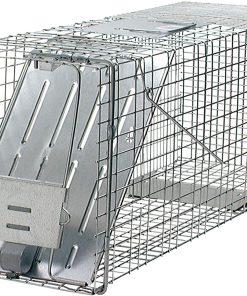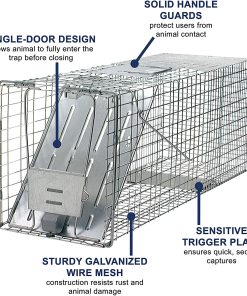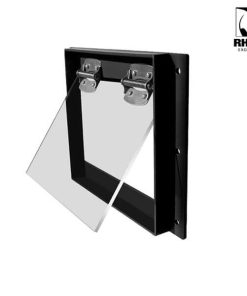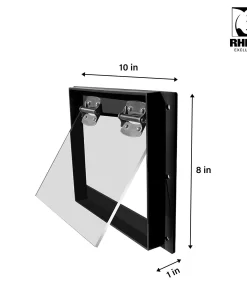The “masked bandit” has adapted well to the urban landscape. Raccoons are nocturnal (active at night), average 2′ to 3′ long (including the tail), and weigh 10 – 20 lbs. Raccoons are omnivorous, eating both plant and animal foods. Plant foods include all types of fruits, berries, nuts, acorns, corn, and other types of grain. Animal foods are crayfish, clams, fish, frogs, snails, insects, turtles and their eggs, mice, rabbits, muskrats, and the eggs and young of ground-nesting birds and waterfowl. Contrary to popular myth, raccoons do not always wash their food before eating, although they frequently play with their food in water.
Raccoons carry ecto-parasites such as fleas, mites, and ticks. They are also host to more serious diseases like raccoon roundworm and rabies. Raccoons are considered high to moderate risk vectors of rabies. There is currently an outbreak of raccoon rabies in the northeast United States. Raccoon roundworm is spread via microscopic eggs in raccoon feces (droppings). Raccoons can cause considerable damage to garden or truck crops, particularly sweet corn. Raccoon damage to sweet corn is characterized by many partially eaten ears with the husks pulled back. Stalks may also be broken as raccoons climb to get at ears. Raccoons damage watermelons by digging a small hole in the melon and then raking out the contents with a front paw. Raccoons cause damage or nuisance problems around houses and buildings when they seek to gain entrance to attics or chimneys or when they raid garbage in search of food. In many urban or suburban areas, raccoons are learning that uncapped chimneys make very adequate substitutes for more traditional hollow trees for use as den sites, particularly in spring. In extreme cases, raccoons may tear off shingles or facia boards in order to gain access to an attic or wall space.
Raccoons also can be a considerable nuisance when they roll up freshly laid sod in search of earthworms and grubs. They may return repeatedly and roll up extensive areas of sod on successive nights. This behavior is particularly common in mid- to late summer as young raccoons forage for themselves, and during periods of dry weather when other food sources may be less available. Adult males occupy areas of about 3 to 20 square miles, compared to about 1 to 6 square miles for females. Adult males tend to be territorial and their ranges overlap very little. Raccoons do not truly hibernate, but they do “hole up” in dens and become inactive during severe winter weather. In the southern United States they may be inactive for only a day or two at a time, whereas in the north this period of inactivity may extend for weeks or months. In northern areas, raccoons may lose up to half their fall body weight during winter as they utilize stored body fat.
Live Traps
R108 Rhino Excluders® Raccoon One Way Door is one of the most innovative raccoon excluder devices on the market. It is used by professional wildlife/pest control companies and DIY enthusiasts. This product is perfect for getting multiple raccoons out of attics, soffits, chimneys and under decks without having to come in contact with the animal.
Exclusion Products





